9. Water Tower
Built in 1893
As imitation of a fortified tower it was
built of quarry stones and bricks.
The tower offers a superb view
across the Maifeld.
Erected in 1893, the water tower put an end to the toil of the daily walks to the wells in Münstermaifeld. The architecture is reminiscent of a fortified medieval tower. Here, the water tower represents the city’s transition to modern times. This was followed by the connection to the electricity grid, the telephone and railway network by 1916. A view from the water tower confirms the dominating position of the city in Maifeld.
The overall appearance of the water tower makes it look like a remnant of the city's fortifications.
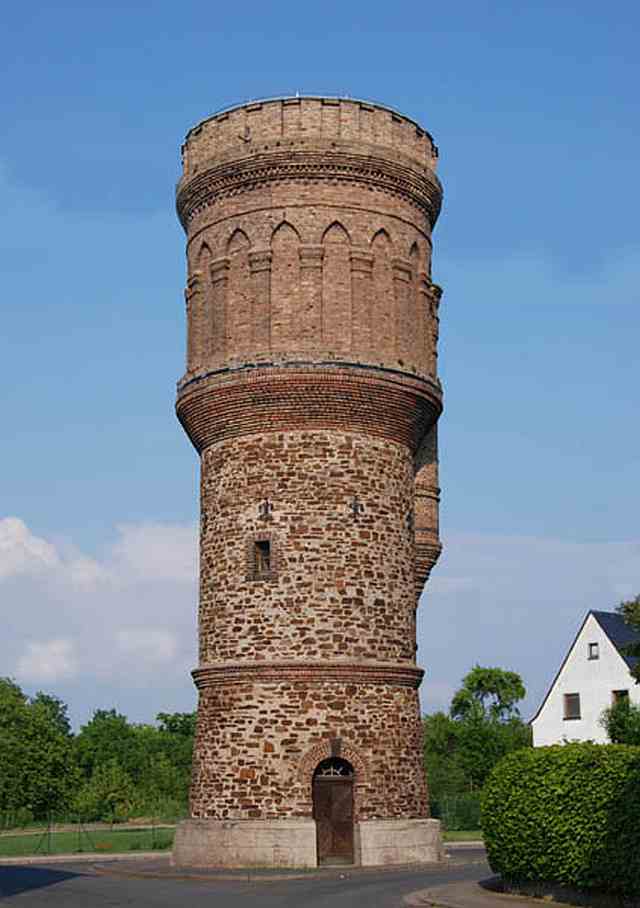
The decoration with pointed-arched blind arcades and a tower crown with battlements closed in before 1933
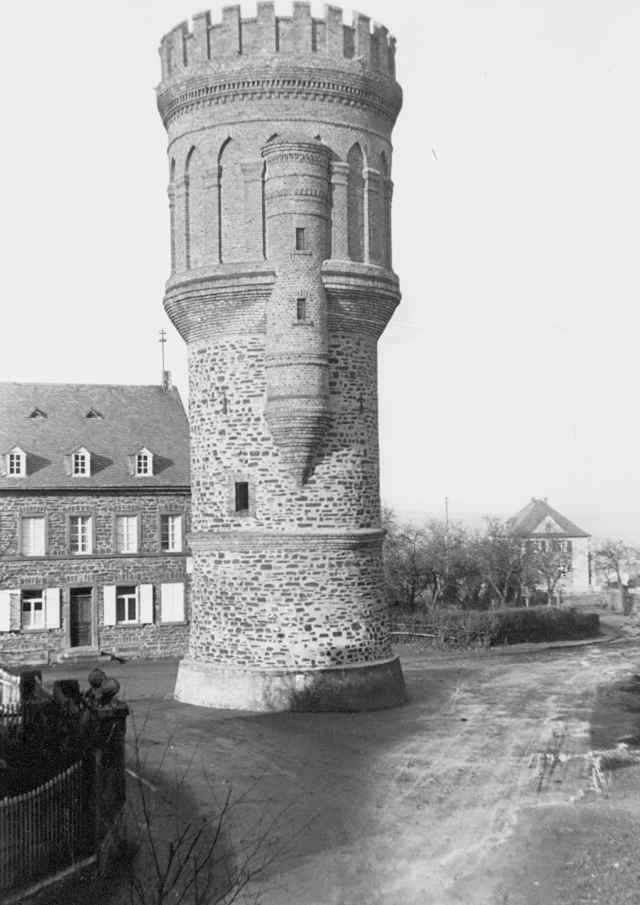
are examples of architecture that still tried to conceal its function.
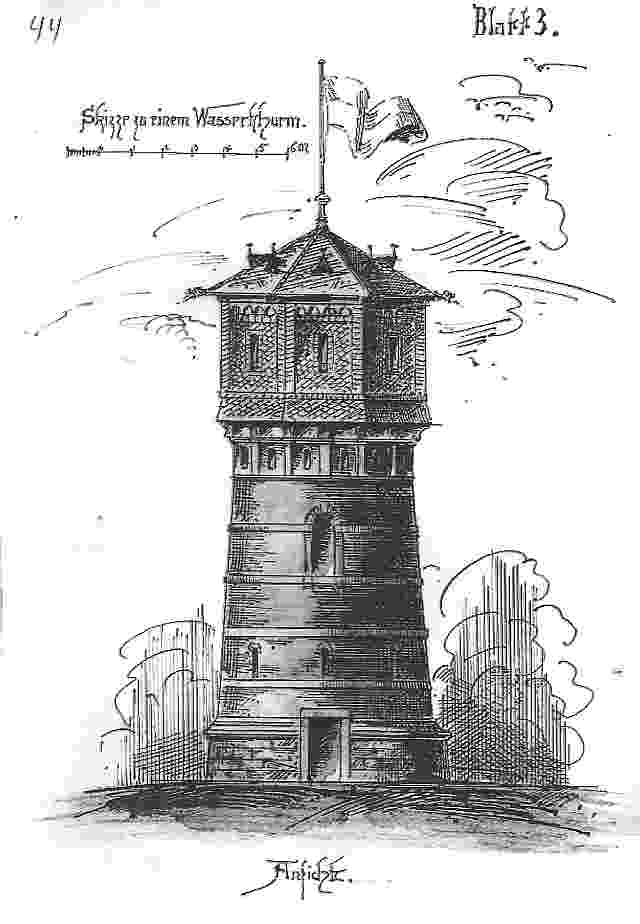
Like the water tower, the seminary building (grammar school), the demolished gymnasium
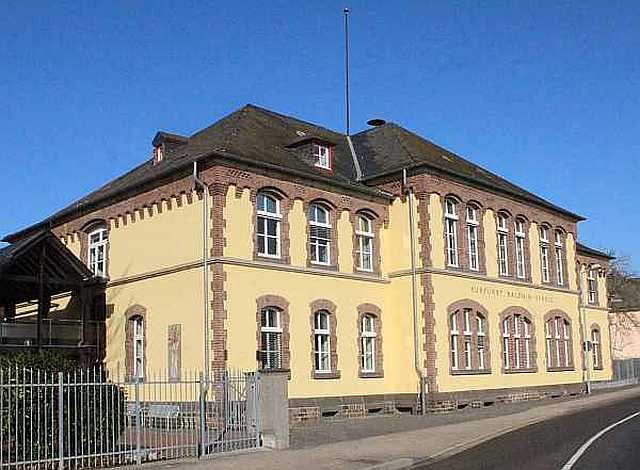
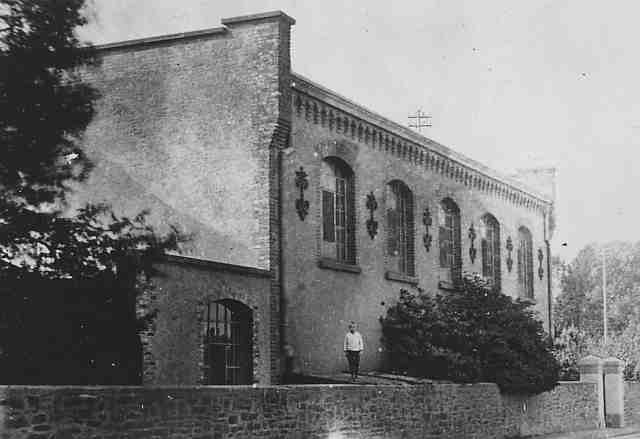
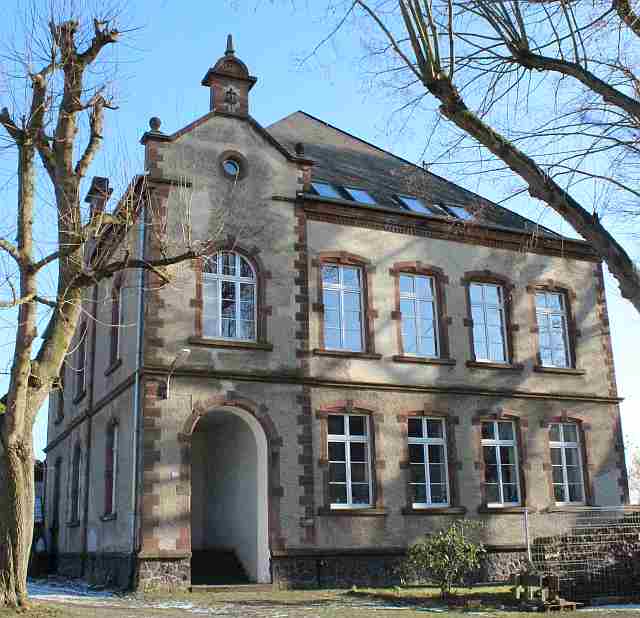
and the elementary school building, were built with richly ornamented brickwork.
The water tower was built in 1893 partly from quarry stones from the city wall. The water from the Severus Spring (Bur) was pumped here into steel tanks. From this reservoir, the drinking water flowed in a natural gradient into the houses.
The plant was shut down in 1955.
The view from the viewing platform goes over the Maifeld and the Moselle valley to the Eifel, Hunsrück and Westerwald. The construction of the water tower was part of the town's move into the modern age. Cooperative associations were founded, such as the drainage cooperative in 1899, the Raiffeisen cooperative in 1900, the dairy cooperative in 1896.
There had been a telegraph station since 1877, a telephone line to Hatzenport since 1909, and the Münstermaifelder Zeitung had been published since 1892. The connection to the electric power supply came comparatively late in 1914, as people had relied on gas for a long time. The connection to the railway network was also delayed until 1916 due to the start of the war. In 1913/14, more than 100 Italian earthworkers from Campli and Teramo in the Abruzzo region were employed on the line, who returned to Italy at the start of the war. At the end of the 1920s, with increasing motorisation, a petrol station was opened at Martinsplatz.
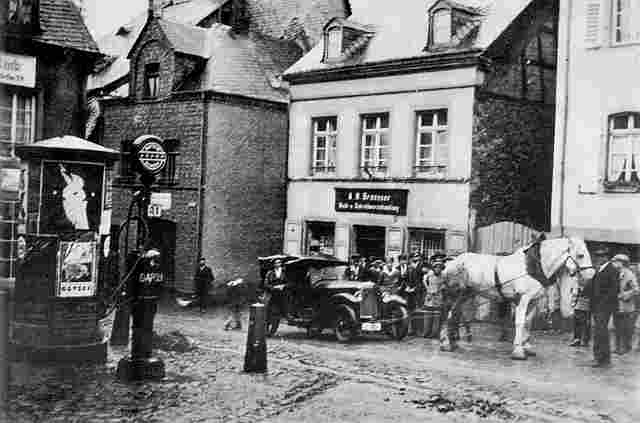
The town promoted itself with the collegiate church and Eltz Castle, but also with the buildings that were to stand for a Münstermaifeld with a future.
A richly illustrated documentation of the history of Münstermaifeld's water supply can be found on the website of the "Förderverein(s) Stiftung Kulturbesitz Gebiet Münstermaifeld e.V.".
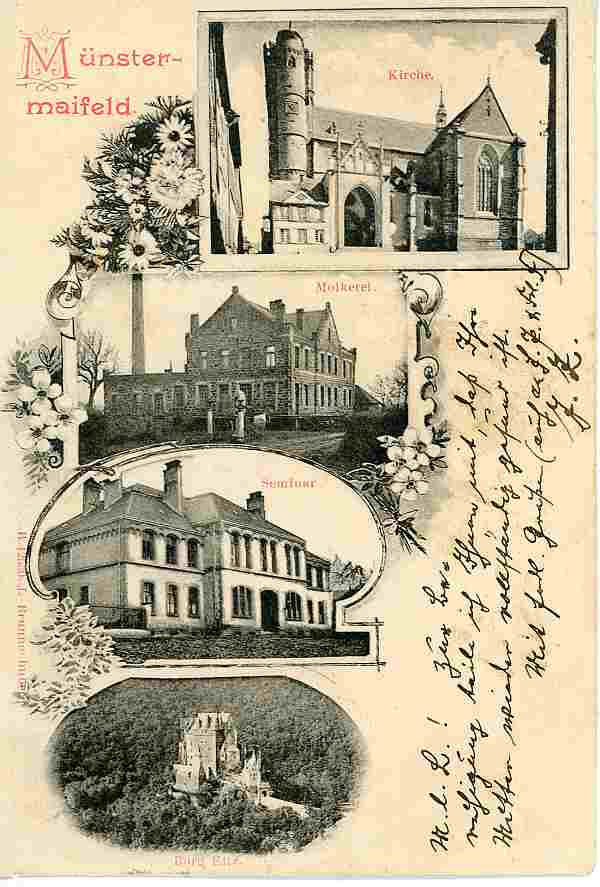
Glossar



